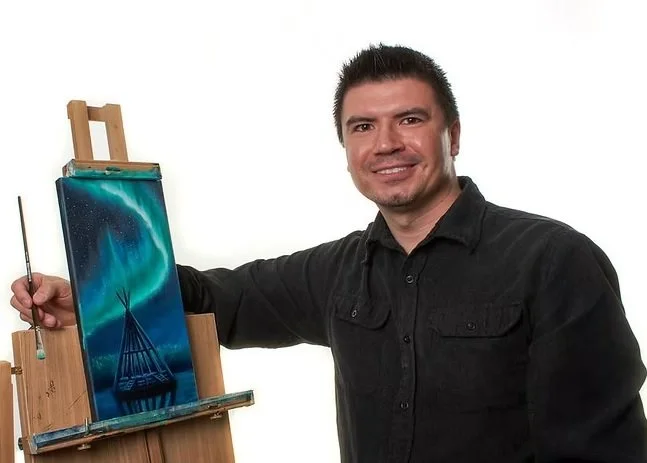
iNTERVIEW WITH AN aRTIST
(FASD AWARENESS MONTH)
Discovering FASD Later in Life
For many, an FASD diagnosis comes in childhood- as symptoms often emerge early on especially around school age as they develop different than their peers. For others, it happens much later and only after years of self-advocacy. Our artist was diagnosed as an adult, after years of confusion and self-doubt.n “I was not able to finish grade 12,” he explained. “I was accused of being lazy or not applying myself, which caused me to be avoidant earlier in life—now I’ve learned to give myself a break when days get hard. — Being diagnosed gave me a sense of relief”.
Life Before and After Diagnosis
Before receiving his diagnosis, one of his greatest challenges was not understanding why life seemed so hard. “Never really knowing why I had so many troubles with jobs, friendships, and keeping up with the world” caused confusion, depression, and even suicidal thoughts. Although receiving a diagnosis came with relief it also came with new new challenges to face: “Accepting it, being open about it, and not having people feel sorry for me.”
Success Measured in Life and Love
When asked about his biggest success, his answer was simple and profound: “Being alive.”
In the past, depression — which he described as the “BLACK BULL” — consumed him. “It got so bad at times I wanted to die and came close to it. — Now I understand myself more and more after receiving my diagnosis. Giving myself time to process challenges has made a big difference. I’ve also been married for over 20 years, which I think is a huge success.”
For him, pride is rooted in relationships and identity. “I’m most proud of my relationship with my wife and myself. Learning that I can still embrace my identity as an artist even though I don’t have a degree — and that I can impress myself before impressing anyone else.”
Advice for Others on the Journey
For those seeking a diagnosis, he cautions patience: “It takes time. More time than anyone can know. This process can feel like a lifetime.” It takes a whole team of people to diagnose Adult FASD, and that team can be difficult to pull together. “They say that no news is good news, but some news is reassuring, and in this life, a little reassurance can go a long way.”
For those supporting someone with FASD, he emphasizes both education and compassion: “I would start with CanFASD — it’s a website full of information. Don’t overload yourself with too much at once, but learn as much as you can. It may get hard some days to support them, so give yourself and that person credit for being alive and appreciate their achievements.”
This interview reminds us that FASD is not just a diagnosis — it’s a lived reality. It comes with challenges, but also resilience, relationships, and creativity.
This FASD Awareness Month, take time to learn more, listen to lived experiences, and support those affected. As our artist reminds us, sometimes the greatest success is simply surviving, and the greatest pride is found in love and authenticity.
For more resources, visit CanFASD.
September is FASD Awareness Month, a time to shine light on the realities of Fetal Alcohol Spectrum Disorder, share lived experiences, and amplify the voices of those directly impacted. This month, we spoke with an artist who generously shared his story — a journey of struggle, resilience, and hope.
It is with great appreciation that we say Màhsi to Wilfred Joey Klein for speaking with us about his experience. For more on his art visit his website





